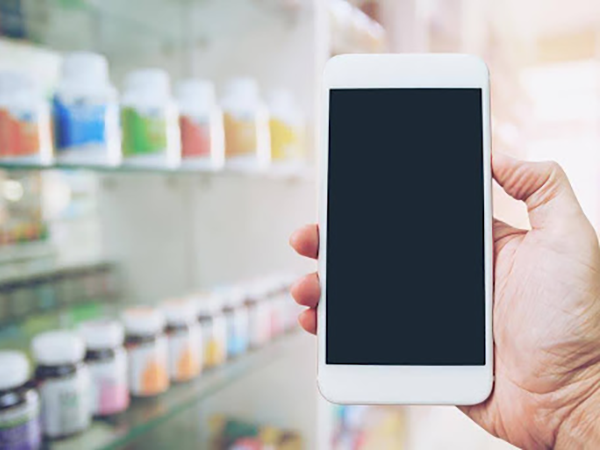 Telehealth services have undergone considerable changes in recent years, spurred by advancing technologies, labor concerns, in addition to the desire for enhanced patient convenience and an improved continuum of care. These services encompass many areas of the healthcare industry, with telepharmacy representing one of the most exciting applications. Remote dispensing technologies in particular promise to deliver exciting advantages for pharmacies and patients alike.
Telehealth services have undergone considerable changes in recent years, spurred by advancing technologies, labor concerns, in addition to the desire for enhanced patient convenience and an improved continuum of care. These services encompass many areas of the healthcare industry, with telepharmacy representing one of the most exciting applications. Remote dispensing technologies in particular promise to deliver exciting advantages for pharmacies and patients alike.
Despite the potential for telepharmacy and remote dispensing to drive change, certain obstacles abound. In this guide, we break down this complex concept by answering the important questions: What is telepharmacy, and why does it matter? Read on to discover how remote solutions are transforming the industry and how pharmacy technologists and technicians can help make the most of this transition.
What Is Telepharmacy?
Telepharmacy is a type of pharmaceutical care that allows pharmacists and their patients to interact even when they are not physically present in the same location. In the journal Medicina, this is defined as “the provision of pharmacist care by registered pharmacists and pharmacies through the use of telecommunications to patients located at a distance.”
A range of services qualify as telepharmacy. This practice involves not only the various mechanisms used to dispense prescribed medications to patients but also solutions such as remote counseling or even remote entry services for hospitals with in-patient pharmacies. What links these numerous opportunities is a reliance on telecommunication and information technology.
What Is Remote Dispensing?
Remote dispensing is an increasingly common form of telepharmacy, designed to help patients receive medications when pharmacists are not actually onsite. This process relies on automated systems, which are capable of packaging and labeling prescribed medications. These are then released to patients at authorized locations.
Many moving parts must be perfected to ensure every medication dispenser is safe, reliable, and compliant. One of the most key components is a distribution method known as the automated medication dispensing system. Mechanical and often portable, these can take many forms. Automated dispensing cabinets, for example, release doses into specific drawers to optimize access and pharmacy workflows.
How Did It Start?
Remote pharmacy services feel modern, yet they are actually far from new. Archeological evidence mentioned in Medicina indicates that early forms of mobile pharmacies existed in Ancient Rome and Egypt, although these largely consisted of medical chests accompanied by medical aids. Similar setups became more prominent in the 16th century, when swift access to medical equipment was needed in times of war and especially for naval operations.
Mail-order pharmacy as we now know it emerged during the Post-War era. The Veterans Administration (VA) was an early pioneer in mail-order pharmacy services and, according to Pharmacy Times, “still accounts for nearly one-third of the mail-order prescriptions that are dispensed in the United States.”
Mail-order setups were quickly adopted by a variety of for-profit entities, and while there was initially some resistance, this eventually drove huge profits during the 1980s and especially the 1990s, as online solutions became available. As more patients became connected online and via smartphones, the modern era of telepharmacy emerged.
Board of Pharmacy of North Dakota
The concept of the remote pharmacy took a major step forward in 2001 when the North Dakota State Board of Pharmacy sought a swift response to the rapid escalation of pharmacy closures throughout the state’s rural areas. The Pilot Telepharmacy Rules were quickly established, outlining how exactly telepharmacy strategies could help serve patients in remote locations.
North Dakota State University
A federal grant from the Department of Health and Human Services (HHS) Office for the Advancement of Telehealth (OAT) allowed the NDSU College of Pharmacy an opportunity to implement a cutting-edge telepharmacy program. The goal: to save pharmacies from closing while putting the Pilot Telepharmacy Rules to the test. At the outset of this initiative, ten rural communities were involved, with four central pharmacy sites serving six remote pharmacy sites.
This pilot project was an overwhelming success, so permanent rules were established to enable the implementation of telepharmacy practice on a broader scale. Further funding from the OAT meant more telepharmacy locations could be opened, including initial hospital-based telepharmacy sites and even an interstate telepharmacy location in Minnesota.
Benefits of Telepharmacy and Remote Dispensing
Telepharmacy and remote dispensing promise numerous advantages that make them compelling solutions for addressing the industry’s greatest challenges. Implemented correctly, these solutions can be highly cost-effective while also empowering patients and boosting autonomy and flexibility among healthcare professionals. Commonly cited benefits include:
Efficiency in Operation
Simply put, remote dispensing solutions are more efficient than traditional dispensing processes. Often equipped with robotic features, these systems increasingly rely on a streamlined model known as channel-fed dispensing, which allows for faster picking speeds. As a Pharmaceutical Technology report reveals, the latest generations of dispensing robots are tailor-made for community pharmacies, where everything from unpacking to stock management can be automated.
Boosting Safety Among Patients and Professionals
Automated systems provide many safety improvements for pharmacy workers and patients alike. Namely, the reduced risk of human error must be considered, as this minimizes the potential for adverse drug events (ADEs).
In its Statement on Telehealth Pharmacy Practice, the American Society of Health-System Pharmacists (ASHP) cites a reduced risk of exposure by limiting the “number of pharmacy personnel and other providers having to handle hazardous medications.” Additionally, when IV admixture verification is required, telehealth solutions can “reduce contamination risk by reducing the need for pharmacists to physically enter sterile compounding areas.”
Saving on Operation Costs
Whether placed in pharmacies, residential facilities, or other locations, automated medication dispensing systems promise to dramatically cut costs incurred by two main scenarios:
- Staffing and labor requirements – In light of recent labor challenges, many pharmacies and healthcare facilities have sought technological solutions to bridge the gap. Telepharmacy opportunities such as the aforementioned robotic drug dispensers can limit the time employees spend on stock management tasks and, instead, free them up to interact with patients.
- Medication errors – A growing body of research indicates that automated dispensing systems reduce medication error rates. These mistakes can be costly, and some studies suggest that, despite high initial investments, dispensing systems can ultimately lead to significant savings based on the reduction in ADEs and the administrative burden these so frequently impart.
Patient Adherence
While pharmacy professionals can play a vital role in boosting patient adherence, advocates argue that automated medication dispensing systems accomplish the same end. In-home dispensers show particular promise in this regard, with a study published in JMIR Formative Research revealing that community-dwelling adults with chronic conditions are more likely to adhere to prescriptions simply because these solutions reduce caregiver burden.
In JMIR Formative Research, experts point out that “medication non-adherence may arise due to forgetfulness and physical and cognitive limitations,” adding that non-adherence is also more likely when complex medication regimens are required. In both situations, automated dispensing solutions can bridge the gap.
Telepharmacy and Remote Dispensing
Remote dispensing solutions are increasingly popular in clinical environments, such as busy hospitals in which nurses often find themselves dedicating far too much time to medication administration rather than interacting with patients. In the context of the community pharmacy, however, these solutions are also receiving a significant boost, especially as robotic applications streamline everyday pharmacy operations. Still, there are a few concerns worth addressing:
What Are the Privacy and Security Implications?
Like telehealth in general, telepharmacy presents privacy and security concerns to be addressed. Unauthorized access presents the most significant risk, and as threat actors grow more sophisticated, there is always the potential for patient data to be compromised during breaches. Stringent cybersecurity solutions should be put in place to protect sensitive data and reassure patients.
What Are the Main Concerns in Regulatory and Legal Considerations?
Local boards of pharmacy typically require that prescriptions are certified by pharmacists before they can be dispensed to patients. This is where automated dispensing brings new complications to the table. Though telepharmacy solutions have seen widespread approval, the caveat is that the certification process requires what the Minnesota Board of Pharmacy refers to as a “real-time, two-way audiovisual link.”
The most promising regulatory development in telepharmacy involves proposed rules from the Drug Enforcement Administration (DEA), which would extend flexibilities initially implemented during the pandemic while offering safeguards for select types of telemedicine consultations.
How to Maintain Patient-Pharmacist Relationship
One of the central concerns surrounding automated medication dispensing systems involves the role of the pharmacist and the pharmacy technician. Previously, pharmacy professionals maintained strong relationships with their patients, who trusted that pharmacists would provide valuable insight into how and when medications could be consumed, along with details on potential adverse effects. Personable interactions also set the tone for strong customer service, thereby increasing patient engagement and loyalty.
As automated medication dispensing systems become more prominent, additional effort may be needed to build and maintain relationships between pharmacy professionals and their patients. These relationships can still be facilitated through remote solutions—and if anything, technological access means that patients can more easily interact with pharmacists while avoiding long lines and other barriers.
The Future and What It Holds
Despite the concerns highlighted above, the future remains bright for automated medication dispensing systems and telepharmacy in general. As the technology underscoring these solutions continues to advance, we can expect them to become more reliable and cost-effective. What’s more, the dispensing systems of tomorrow will produce a wealth of data, leading to valuable insights that help pharmacies better serve patients.
Big Data Analytics
Big data promises to transform telepharmacy. As datasets become larger, more complex, and easier to acquire, these can provide further understanding of what exactly constitutes success in telepharmacy and how remote solutions can better serve patients while driving profit. As a report published in the journal Hospital Pharmacy explains, big data “leads to more confident decision-making, improved operational efficiency, and reduced costs.”
These abilities stem, in part, from the ability of data-driven systems to identify at-risk patients and offer early interventions. What’s more, the Hospital Pharmacy report notes that “clinical benchmarking databases can be used to identify best practices, sources of waste within a workflow, and resource utilization.”
Big data can also provide valuable insight into patient behavior from a retail perspective. Data generated by smartphones, for instance, can reveal when pharmacies attract the most visitors and how long people tend to remain onsite.
Building Remote Geography Presence
From the beginning, the main prerogative of remote dispensing has been to better serve patients in rural or otherwise hard-to-reach areas. This remains a priority, and moving forward, improvements in automated dispensing would make it possible to safely implement remote systems that reach an even wider range of patients. These will be increasingly complemented by remote counseling services to make sure patients receive proper instruction and feedback from pharmacy professionals.
Help Drive the Future of Pharmacy Services
The world of pharmacy is an excellent access point into the medical landscape. Learn more about the Pharmacy Technology program with Carrington College.
Sources:
- Baldoni, S., et al. “Telepharmacy Services: Present Status and Future Perspectives: A Review.” Medicina.
- Kruczek, N. “What is the Role of the Mail-Order Pharmacy?” Pharmacy Times.
- Smith, E. “Telepharmacy: A Virtual Win-Win.” QS/1.
- Kent, C. “Drug dispensing goes digital.” Pharmaceutical Technology.
- ASHP Statement on Telehealth Pharmacy Practice.” American Society of Health-System Pharmacists.
- Patel, T., et al. “An In-Home Medication Dispensing System to Support Medication Adherence for Patients With Chronic Conditions in the Community Setting: Prospective Observational Pilot Study.” JMIR Formative Research.
- “Guidance Concerning Approval of Telepharmacies.” Minnesota Board of Pharmacy.
- Stokes, L., et al. “Big Data: Implications for Health System Pharmacy.” Hospital Pharmacy.



